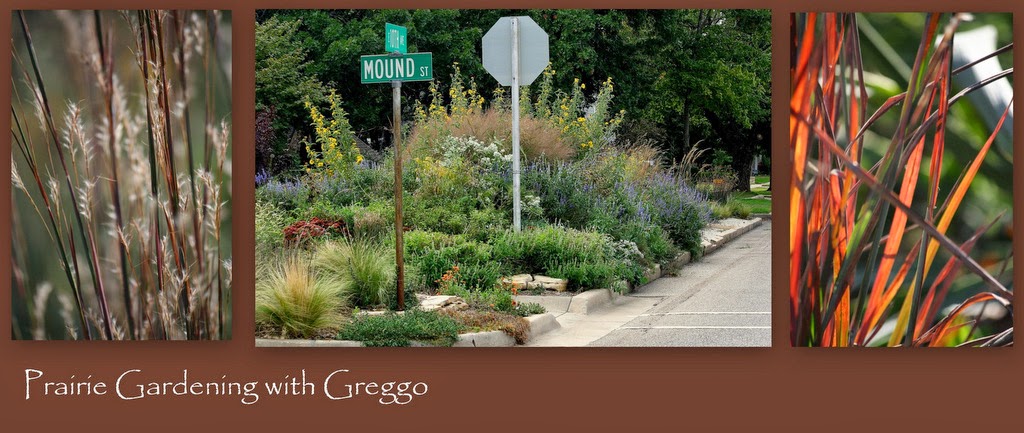Les at A Tidewater Garden blog publishes his Top Ten Images of the year this time every year. It gives many of us in the garden blogging realm reason to follow his lead. Go to his blog and leave a comment as well as a link to your own favorite images of the year.
This image of a Cedar Waxwing was taken through a dirty sunroom window in April. A large group of these feeding on Hackberry berries and drinking from the stock tank frequented my viewfinder. The background hue greatly contributed to the harmony of the above photo. The bird looks so majestic in this pose. In other poses they remind me of ornery bandits.
Also in June a visit from my granddaughter and a photo from the front hell strip.
Another June image takes me to a small town Aline, Oklahoma to visit my in-laws during wheat harvest. This old feed store is a very similar site we see in many small rural communities, rural decay. This was taken from my iPhone.
It was a very hot that day, and granddaughter, Mollie the border collie, and I head back to the homestead.
Speaking of the dog days of summer, August with my wife Cindy, adopted grandson Sydney in the shade garden.
August Buckeye butterfly on Liatris ligustylus.
And to close: from September's Monarch migration.
Enjoy and share, Happy New Year to you!
Greggo, and yes this is Kansas, Toto.
In June, behold my water lily 'Alaska' revealed its first bloom in the stock tank. I painted the bottom of the tank black to increase the reflection value.
Also in June a visit from my granddaughter and a photo from the front hell strip.
Another June image takes me to a small town Aline, Oklahoma to visit my in-laws during wheat harvest. This old feed store is a very similar site we see in many small rural communities, rural decay. This was taken from my iPhone.
It was a very hot that day, and granddaughter, Mollie the border collie, and I head back to the homestead.
Speaking of the dog days of summer, August with my wife Cindy, adopted grandson Sydney in the shade garden.
And to close: from September's Monarch migration.
Enjoy and share, Happy New Year to you!
Greggo, and yes this is Kansas, Toto.











